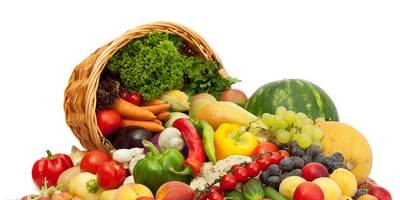Benefits of hydroponics |
|
Instead of drawing nutrient-rich water from the soil, hydroponic products are grown submerged in nutrient-rich water. Aeroponic is a related method in which the roots hang in the air and are regularly moistened with water and nutrients. Hydroponic growers are able to meet the demand for local produce in areas that are not suitable for traditional farming. But even in farming-friendly regions where rain and sunshine are abundant, storms, droughts, and sudden frosts can cause unpredictable and costly crop losses to which closed farms are largely immune. Hydroponic crops are also less susceptible to weeds, insects and other pests, which means products can be obtained without the use of herbicides and pesticides. All of this has made hydroponics one of the fastest growing sectors of the agricultural industry, and more traditional growers are investing in hydroponics as a supplement to their core business or are switching to it entirely. Other potential benefits of hydroponic farming are the degree of control the grower has over the conditions in which the plants are located and the ability to breed with 100% precision the ones that will produce the best results. However, not all plants grow equally well in hydroponic conditions, at least with modern technology. Lettuce and other leafy greens, herbs, tomatoes, peppers, cucumbers and strawberries are the most common types of plants for hydroponic cultivation. Hydroponic operations, which often use sophisticated water recycling systems, can use up to 90% less water than traditional agriculture, depending on the location. While traditional farms in high water areas are highly dependent on irrigation and use much more water than hydroponics, other areas get most of their water from rainfall. Some hydroponic growers also rely on electric light instead of the sun. This allows growers to artificially lengthen the day and manipulate light waves to increase yields and productivity year round.
What about nutrients in hydroponics?Comparing the nutrient content of hydroponic and soil-grown foods is difficult, and there are very few head-to-head studies. Both traditional and hydroponic farmers can influence the nutritional value of foods by adding appropriate nutrients to the soil or growing medium. But the nutritional composition of a fruit or vegetable also depends on the particular cultivar or variety, the degree of ripeness at harvest, and the storage period after harvest. In hydroponics, there is no danger of plants taking up heavy metals that may be in the soil. On the other hand, growing vegetables in soil can provide benefits that we do not yet realize. For example, raw produce can be a source of beneficial probiotic bacteria in the soil. While it's unclear how much this can be replicated indoors, commercial hydroponic growers are experimenting with methods that promote a healthy and diverse microbiome. And what about the taste?While you may think that sun and soil are essential for good taste, factors that affect it, including air temperature, humidity, the amount and color spectrum of available light, nutrients and moisture, can be controlled and more accurately reproduced in a hydroponic environment. ... But the local grocer's hydroponic products don't have to be grown in the immediate area. Although hydroponics allows you to grow fruits and vegetables anywhere, the largest hydroponic growers in the United States, accounting for about half of hydroponic product sales, are grouped in Pennsylvania, California, New York, Vermont, and Wisconsin. Organic debateBecause hydroponic vegetables and fruits can be grown without the use of pesticides or herbicides, many hydroponic growers are certified organic, which allows them to sell at a higher price. But many traditional organic farmers are roaring out loud. “Allowing hydroponic products to be certified organic is completely against the values of the organic movement,” says Kastel. - Improving and maintaining soil health and biodiversity is one of the basic principles of organic growth. How can you dispose of the soil if it is not there? " Proponents of organic hydroponics argue that hydroponic systems are consistent with the principles of management, conservation and environmental compliance set out in the Organic Food Production Act of 1990. They also view new technologies such as hydroponics as a necessity to meet the demand for organic matter. In 2010, the federal advisory board of the National Organic Standards Board, or NOSB, asked the United States Department of Agriculture to make it impossible for hydroponic products to obtain organic certification.The USDA has not yet accepted this recommendation. "The USDA has made it clear that hydroponics certification will be limited," said Nate Lewis, director of agricultural policy at the Organic Trade Association. "At the very least, we'd like to see a rule that requires hydroponic vegetables to be labeled as such." In April 2017, the NOSB was convened to discuss potential recommendations that it will provide to the USDA for organic certification of hydroponic systems. No decision was made and the Crop Subcommittee will develop a proposal on this topic to meet in the fall. Kordopolova M. Yu. |
| Wittrock's pansies or violets | Pests of indoor and garden plants |
|---|
New recipes
 Hydroponically grown lettuce, tomatoes, strawberries and greens are an increasing share of the produce in many grocery stores and farmers' markets. But plants grown indoors and under controlled conditions are no longer new. For centuries, growers and growers alike have used greenhouses and potted gardening for growing during the growing season, creating ideal conditions and increasing growing space. What Makes Hydroponics Different From No Soil?
Hydroponically grown lettuce, tomatoes, strawberries and greens are an increasing share of the produce in many grocery stores and farmers' markets. But plants grown indoors and under controlled conditions are no longer new. For centuries, growers and growers alike have used greenhouses and potted gardening for growing during the growing season, creating ideal conditions and increasing growing space. What Makes Hydroponics Different From No Soil?






